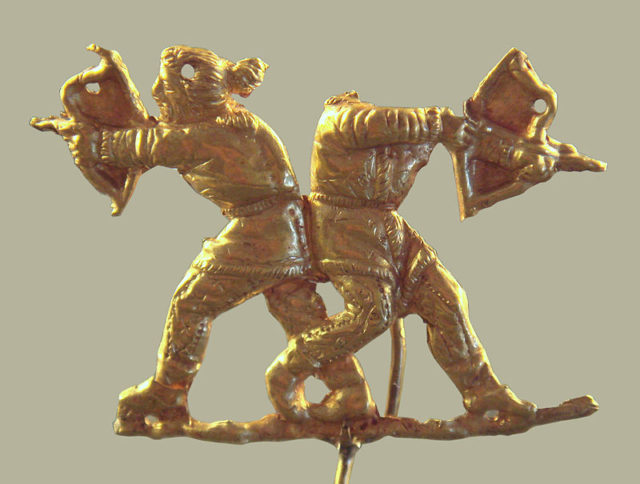The tomb of an ancient warrior king was recently found. The king was known to have ruled the area over two millennia ago, and was found wrapped in what was once a golden cloak, fitting funerary wear for a man of his stature. As archaeologists discovered the mighty king, they speculated that he was a Scythian ruler because of the tomb’s contents, and location in the Altai Territory of southern Russia. The man was sent to the heavens mounting his favorite horse, accompanied by his share of the riches that he earned for his kingdom and an elegantly crafted Scythian sword.

The archaeologist in charge of the recovery of the artifacts inside of the tomb said that even though his cloak had lost the battle against the test of time, there were still gold flakes from the cloth located in the soil.
The Scythians were a tribe that traveled across the entire region throughout central Eurasia and eventually expanded into Eastern Europe. The tribe became a force to be reckoned with in the eighth century BC – their fighting skills on horseback made them a powerful and formidable opponent during that era. By the next century, the Scythian tribe established their first home by using their intelligence, craftsmanship, and fighting skills from horseback. By 500 BC, the Kingdom of Scythia had drafted an extremely successful trade pact with Greece. Many of the rulers of the tribe became shockingly rich. The Scythians were renowned for their extravagant jewelry. They were known for wearing beautiful golden necklaces, some of which have been discovered in Ukraine.

The new burial grounds were discovered along the outskirts of Krasny Yar, a settlement thought to date from around half a millennium BC. The grave had almost completely been destroyed by a common challenge in archaeology – farming; the land had been torn apart by decades of plowing and digging that occurred over the burial grounds. Luckily, the body remained undamaged because it was guarded by a ring of stone located under the barrow.
Thr fact that the man was buried with his horse shows the connection this civilization had with the beautiful beasts that they called companions. Scholars believe that the burial ceremony was particularly extravagant.
Alyona Naumova, one of the students who took part in the research, told local media that he felt privileged to be able to take part in the spectacular find. He said, “As a student of history this was a rare opportunity of experiencing it first hand and being in direct touch with our ancestors.”
